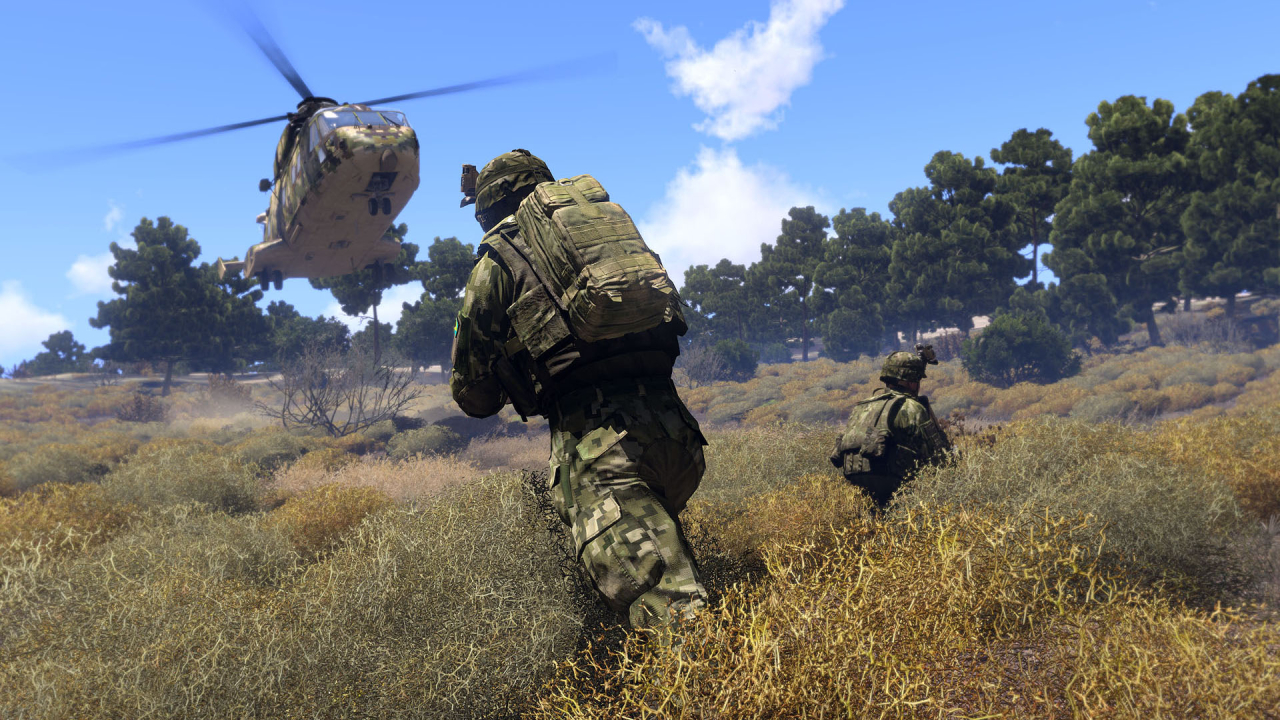- 2013 military simulator ARMA 3 has once again been used to share fake footage of ongoing conflicts.
- This time Israel-backing accounts on X have shared gameplay footage purported to show the first combat usage of the “Iron Beam” air defence system.
- The system is a real weapon that uses a laser to blow up incoming missiles.
Amid a record spread of disinformation and fake media online as the conflict in Israel and Gaza escalates, users are sharing clips from a videogame and purporting that it is actual footage from the war. To make matters worse, users are actively editing gameplay clips to make them appear more authentic.
The game in question is ARMA 3 (or ARMA III), a popular military simulator where players can enact their wartime fantasies safely, which can extend into the realm of sci-fi or horror using mods. The game was developed by Czech studio Bohemia Interactive and released in 2013.
Over the weekend, pro-Israel accounts were posting clips of the purported first usage of the “Iron Beam” laser anti-missile system. A real piece of military technology that Israel announced would be used during the ongoing war. However, the footage – even though edited to make it seem even more realistic – is actually from ARMA 3.
The footage shows missiles being shot down and was cropped and its resolution was lowered to make it seem like it was taken from a smartphone by someone on the ground. But in truth it is gameplay. It goes to show how realistic the game is.
“Iron Beam” is a real weapon. Reports allege that Israel will be using the technology to bolster its Iron Dome air defense system in the war against rockets, missiles, mortars and other artillery. It works by shooting out a high-powered laser that disables missiles with a range of 10km. Unlike other air defense weaponry, the Iron Beam costs very little to fire out a single beam as it uses electricity to power its laser system.
However, no footage has yet been captured of it being used in combat and no doubt military nerds jumped at the chance to create footage as it is a novel and “cool” weapon.
Another piece of ARMA 3 footage being circulated was purported to show Israeli helicopters being shot down by HAMAS. The same editing tricks were used again.
FACT CHECK:
— Brian Krassenstein (@krassenstein) October 10, 2023
This video is being circulated on multiple social media platforms including X. The Video shows Hamas allegedly shooting down Israeli Helicopters with the caption "more power to you Hamas".
The FACTS:
The video is actually taken from a video game called 'Arma 3'.… pic.twitter.com/UJDrN4ZwzX
The reason why the ARMA platform is being used again and again to create and share fake news is, as the developers say, it is a sandbox platform that can be endlessly modded. Modders can then add anything they want into the game, including areas that look like the Middle-East, equipment similar to that which is being used by real-world combatants, vehicles and more.
“Modders can create whole new terrains, ground vehicles, aircraft, weapons, uniforms, equipment, and scenarios. They can then share their creations with a community of players. For instance, as of today, there are more than 20 000 Arma 3 mods available to download via the Steam Workshop,” say the developers in a blog post about the game being used as misinformation on social media.
While it’s flattering that Arma 3 simulates modern war conflicts in such a realistic way, we are certainly not pleased that it can be mistaken for real-life combat footage and used as war propaganda. It has happened in the past (Arma 3 videos allegedly depicted conflicts in Afghanistan, Syria, Palestine, and even between India and Pakistan), but nowadays this content has gained traction in regard to the current conflict in Ukraine,” said Pavel Křižka, PR manager of Bohemia Interactive.
Křižka said that the developers are working with media outlets such as AFP, Reuters and others to actively fight their game being used in such a way, but in the end, it is ineffective to stop the spread entirely. “With every video taken down, ten more are uploaded each day,” he adds.
He shared some pointers to protect themselves from ARMA 3 fake clips. Firstly, these fake clips using the game are usually of very low resolution. These days even dated smartphones provide HD footage of combat scenarios.
An overly shaky camera is another giveaway. According to Křižka, people who share fake news using gameplay footage take videos using their phones pointed at the computer screen running the game. Footage using ARMA 3 also often takes place at night so it is easier to hide lower-detailed textures from the game.
Other giveaways include the removal of in-game sound which often is more bombastic than real footage. Gameplay footage may also include HUD elements, and the game’s user interface, such as weapon selection, ammunition counters, vehicle status, etc.
Unrealistic particle effects for explosions and gun flashes, as well as unrealistic vehicles, equipment, uniforms and weapons, can be signs that the game is used. “For instance, in one widely spread fake video, the US air defense system C-RAM shoots down a US A-10 ground attack plane. Units can also display non-authentic insignias, camouflage, etc.,” Křižka explains.
As always, engage your critical thinking when on social media and ask why a certain account may be sharing a certain piece of information. Chances are there are ulterior motives. For more tips and tricks on navigating fake news on social media, check out the latest episode of our Always Online podcast.
[Image – Steam]

